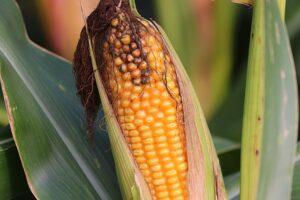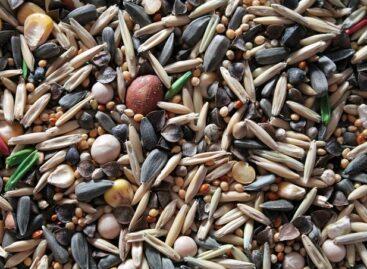Maize free from aflatoxin contamination was also grown in the variety experiment network of Nébih
In the corn experiment of the Breed Experiment Station of the Nébih Baranya county, it was possible to prevent aflatoxin contamination with appropriate, well-timed insect control. And at those variety experiment stations where the summer temperature and drought were more moderate, the appearance of Aspergillus species on corn was not common this year either. The National Food Chain Safety Office (Nébih) draws attention to the fact that aflatoxin contamination in fields can be reduced primarily by applying Good Agricultural Practices.

(Photo: Pixabay)
Aflatoxins are naturally occurring carcinogenic mycotoxins that are dangerous to both animals and humans and are produced by soil-dwelling molds (Aspergillus species). Aspergillus flavus is a common mold that spreads best at high humidity and temperature. Infection requires humid, moderately warm weather during flowering, but dry, hot weather is required for later toxin accumulation.
At least 13 different aflatoxins can be found in nature, of which aflatoxin B1 is considered the most toxic
According to model calculations published on the website of the European Food Safety Authority (EFSA) in 2012, if the average temperature increases by +2 °C, the risk of aflatoxin contamination of corn will increase greatly in the southern European region, while it will increase moderately in Hungary. As a result of rapid climate change (extremely high temperatures or prolonged drought), the fungus, which was previously considered a pathogen in warehouses, is already causing damage in the field. Aspergillus flavus infection of corn before harvest is caused not only by weather conditions but also by insect infestation.
Domestic variety experiment stations are located in different climate zones
Of these, a large amount of aspergillus infection was found during a corn experiment at the Székkutasi Breeding Experiment Station, which is located in the Southern Great Plains region, which is the most affected by drought and extremely high temperatures. The toxin measurements confirmed the severity of the infection. However, in the corn experiment of the Eszterágpusztai Breeding Experiment Station in the southern part of the country, in the Baranya county, the experts successfully prevented the infection with appropriate, well-timed insect control. At the variety experimental stations where the summer temperature is less high and the drought is less severe, such as Vas, Győr-Moson-Sopron and Borsod-Abaúj-Zemplén counties, the appearance of Aspergillus species on corn was not typical this year either.
The agency advises farmers to use
Good Agricultural Practices to minimize aflatoxin contamination in the field It is important to know that any technological operation that reduces the effects of stress on plants also makes them more resistant to molds, at the same time reducing the chance of mycotoxin formation. The risk of aflatoxin formation and accumulation is reduced thanks to the use of appropriate crop rotation and protection against insects. Breeding long-term resistant hybrids is an important task.
Nébih
Related news
Farmers protesting against the EU-Mercosur agreement block several highways in Belgium
🎧 Hallgasd a cikket: Lejátszás Szünet Folytatás Leállítás Nyelv: Auto…
Read more >Innovative seed treatment solution being developed at the University of Szeged
🎧 Hallgasd a cikket: Lejátszás Szünet Folytatás Leállítás Nyelv: Auto…
Read more >Thousands of farmers protest in Warsaw against Mercosur agreement
🎧 Hallgasd a cikket: Lejátszás Szünet Folytatás Leállítás Nyelv: Auto…
Read more >Related news
Farmers protesting against the EU-Mercosur agreement block several highways in Belgium
🎧 Hallgasd a cikket: Lejátszás Szünet Folytatás Leállítás Nyelv: Auto…
Read more >Innovative seed treatment solution being developed at the University of Szeged
🎧 Hallgasd a cikket: Lejátszás Szünet Folytatás Leállítás Nyelv: Auto…
Read more >Thousands of farmers protest in Warsaw against Mercosur agreement
🎧 Hallgasd a cikket: Lejátszás Szünet Folytatás Leállítás Nyelv: Auto…
Read more >



